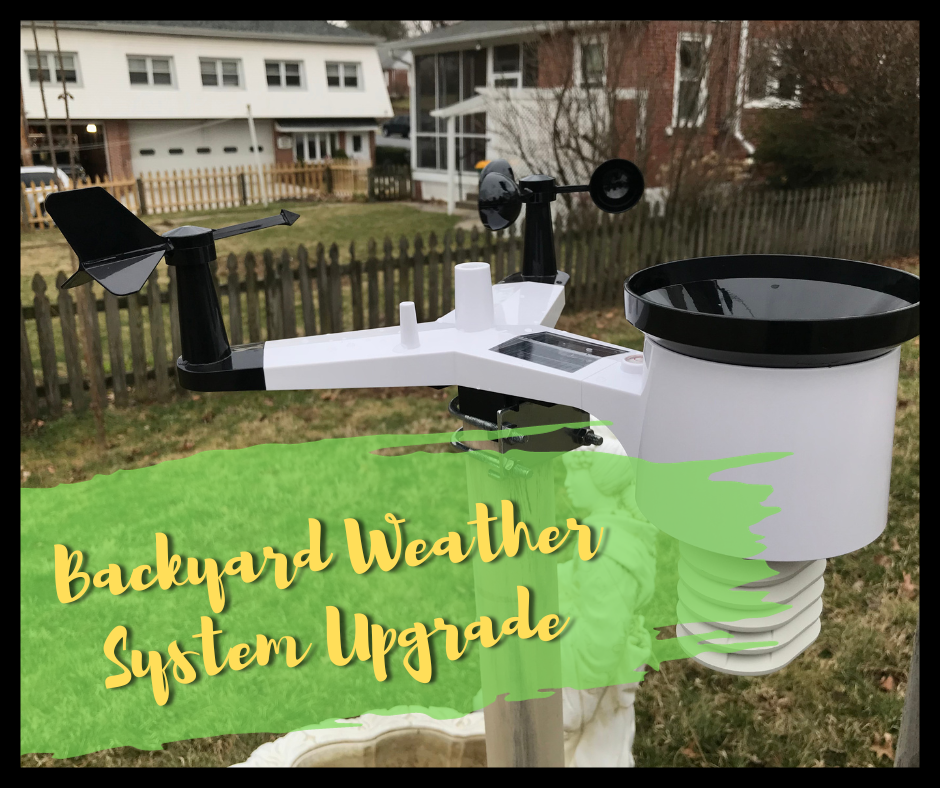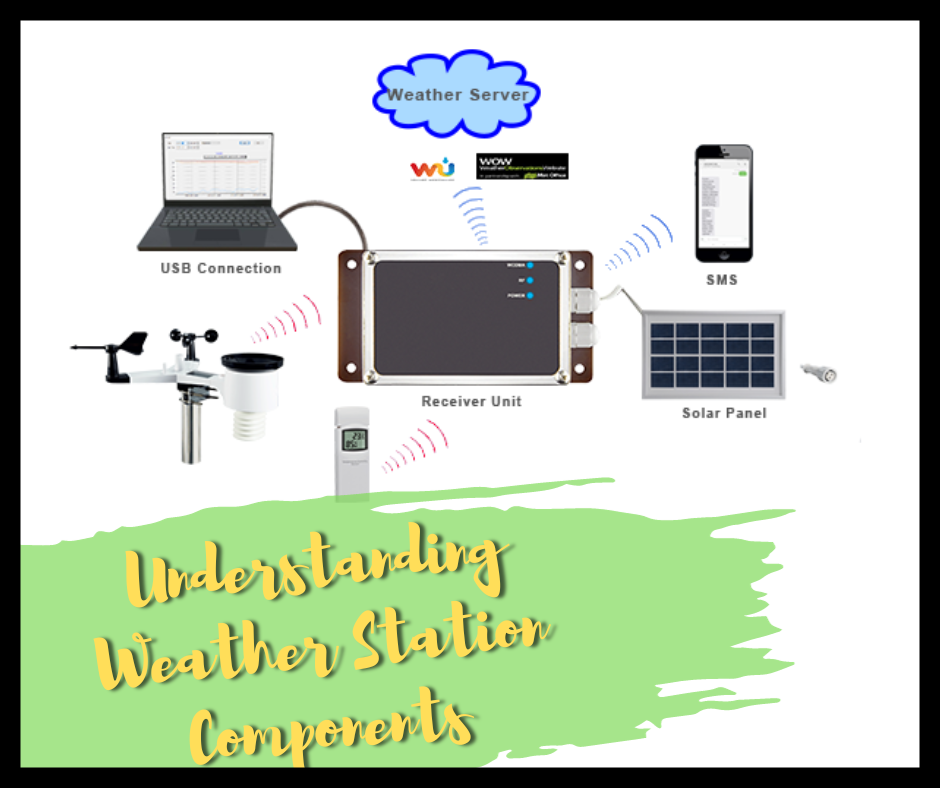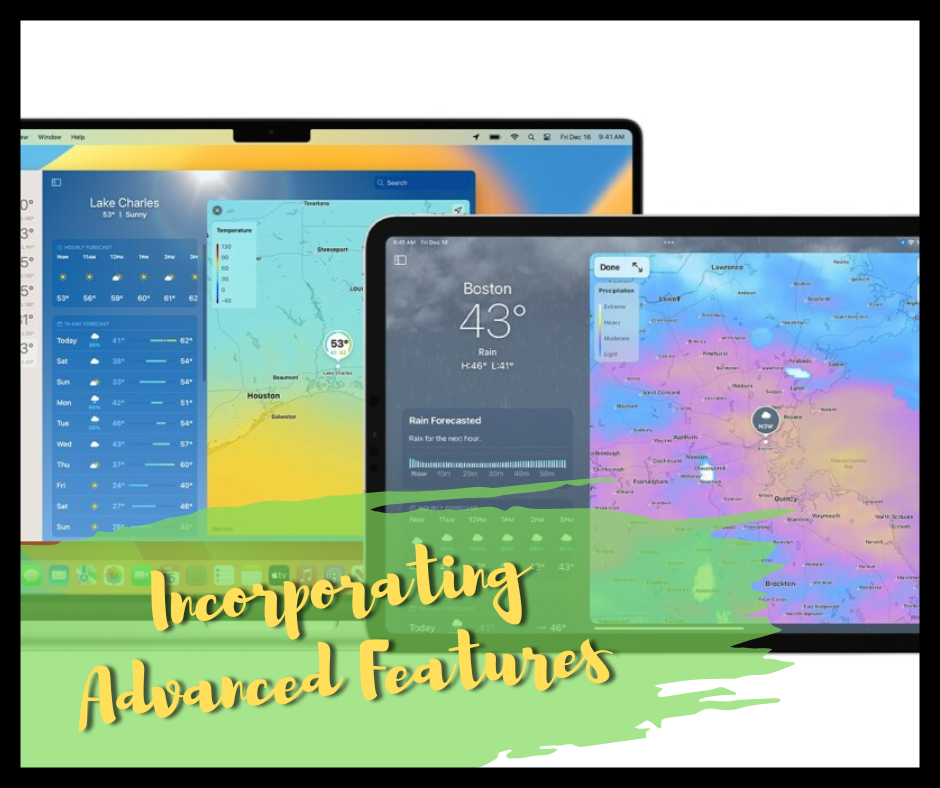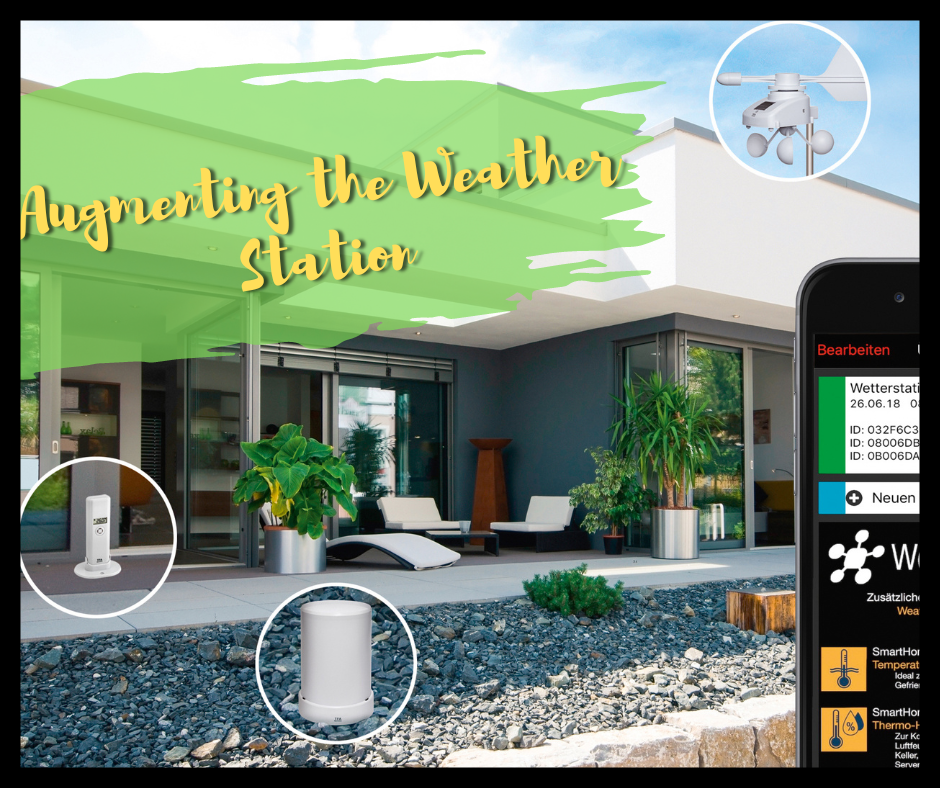==================
A Caveat and Affiliates
First off, a little caveat: within my articles you will find affiliate links, meaning if you buy them, I get a small commission. Your cost is not affected. In addition, I am an Amazon Associate and I earn from qualifying purchases on Amazon.
And yes, if I say that I recommend a product here, it means I truly believe it is a good product. I refuse to recommend any product that I have not researched and believe to be a good value.
Even better, I provide you with a very clear picture of the product, it’s use, and the probable value.
Earning your trust is important to me. I run this website myself and the commissions and donations help support the site.
Sound reasonable and fair enough? Let’s continue to the article.
==================
Do you want to transform your backyard into a high-tech weather station? In this article, we’ll guide you through a backyard weather system upgrade with sensors and features.
Discover how easy it is to stay ahead of the weather. Are you curious to see how you can forecast the weather in your backyard? Enjoy reading!
Backyard Weather System Upgrade: Enhancing Your Home Meteorology with New Sensors and Features

Enhancing your backyard weather station with additional sensors and features is a valuable step toward understanding your local microclimate comprehensively.
Whether you’re a gardening enthusiast tracking precipitation for your plants or a weather hobbyist interested in detailed atmospheric analysis, upgrading your weather station can provide you with more precise data. Adding sensors expands the capability of your original setup, enabling you to monitor a variety of environmental conditions.
Before investing in new sensors, planning your upgrade carefully is important. Consider what additional data you want to capture: wind speed, UV radiation, soil moisture, or perhaps air quality.
Each sensor provides specific insights that can enhance the monitoring and predictability of weather patterns in your vicinity. Additionally, incorporating advanced features like smartphone integration can transform your weather monitoring into a more interactive and accessible experience.
Key Takeaways
- Upgrading your weather station enriches local climate data with additional measurements.
- Planning is crucial in selecting the right sensors that match your weather-monitoring goals.
- Advanced features like app connectivity enhance the user’s interaction with their station.
Understanding Weather Station Components
Knowing the different parts that make up the system is essential to upgrade your backyard weather system. Each component plays a critical role in collecting and interpreting weather data.

Core Sensor Types
Your weather station is as good as the sensors it uses. These are the primary sensors found in most stations:
- Temperature Sensors – Measure ambient temperature.
- Humidity Sensors – Record moisture levels in the air.
- Barometric Pressure Sensors – Track atmospheric pressure, a key indicator for weather forecasting.
- Wind Speed and Direction Sensors – Collect data on wind patterns.
- Rain Gauges – Calculate precipitation levels.
- Solar Radiation Sensors – Evaluate sunlight intensity.
- UV Index Sensors – Detect the strength of ultraviolet radiation.
Each sensor contributes to a comprehensive understanding of the weather conditions in your area.
Data Processing Units
The data loggers are the brains of your weather station. They perform critical functions, such as:
- Capture and Store Data – Collected from each sensor.
- Analyze Trends – Over time, giving you historical insights.
The capacity and complexity of data loggers can vary greatly, affecting the granularity and duration of weather data storage.
Display Options
How you view the data collected is vital. Weather stations offer several display options:
- Digital Displays – Offer real-time data readouts, sometimes with touchscreen capabilities.
- Computer Software – For in-depth analysis and trend visualization.
- Mobile Apps – Provide access to your data on the go.
Selecting the right display option will depend on how you prefer to access and interact with your weather data.
Planning Your Upgrade
Upgrading your backyard weather system involves more than just purchasing new sensors. It requires careful planning to align your goals with your current setup’s capabilities and ensure compatibility with new components.

Setting Goals and Objectives
Before investing in new sensors or features, clearly define what you want to achieve with your upgrade. Do you desire more precise temperature readings, or are you looking to comprehensively monitor weather changes with additional sensors like those for UV index and solar radiation? Establishing your goals will guide your upgrade process and equipment selection.
Assessing Current System Capabilities
Evaluate the performance and limitations of your existing weather station. Does it have additional sensor support, or are there limitations regarding the number of sensors it can manage simultaneously? Check how data is displayed and stored and whether it gives you the level of detail you need for your home’s weather monitoring.
Upgrade Compatibility Check
Ensure the new sensors you plan to add are compatible with your system. Manufacturers often list compatible models and types of sensors, like those from La Crosse Technology, that can be integrated. Some systems offer seamless integration, while others might require additional equipment or adapters to link new sensors.
Selecting Additional Sensors
Enhancing your backyard weather station involves choosing the right additional sensors to meet your specific monitoring needs. Each type of sensor serves a unique purpose and will bring a new dimension to your local weather insights.

Temperature and Humidity Sensors
You’ll want to ensure that any added temperature and humidity sensors are compatible with your existing system. For accuracy, these sensors should be calibrated correctly and positioned away from direct sunlight or reflective surfaces to avoid skewed readings.
Wind Speed and Direction Sensors
Precise measurements of wind patterns can be achieved with wind speed and direction sensors. These should be placed in an open area, ideally higher up, to reduce the impact of obstructions on the data collected.
Rainfall Measurement Sensors
When adding rainfall measurement sensors, checking for models with a self-emptying bucket is important to ensure continual and maintenance-free operation. Position these sensors in a location that is unobstructed by things like trees or buildings for accurate precipitation data.
Solar and UV Radiation Sensors
Solar and UV radiation sensors will provide data on the solar radiation and UV index levels. They should have a clear view of the sky, and typically, they must be mounted horizontally for optimal performance. These readings can be vital for understanding potential sun exposure and solar power conditions.
Incorporating Advanced Features
Upgrading your backyard weather station involves adding specialized sensors that enhance its capabilities. These upgrades allow you to monitor environmental conditions with greater precision and detail.

Lightning Detection
You can track approaching storms in real time by integrating a lightning detector into your weather station. This feature provides early warning alerts for severe weather and logs lightning strike counts and distances. Ensure the detector you choose is compatible with your existing system and offers a reliable detection range.
Soil Moisture Monitoring
Soil moisture sensors offer valuable insights, particularly for gardening and landscaping. These devices measure the soil’s water content, helping you optimize irrigation and prevent over or under-watering. Look for sensors with Bluetooth capabilities that send data to your smartphone, like the Wanfei Plant Monitor, to make monitoring more convenient.
Atmospheric Pressure Analysis
An atmospheric pressure sensor can improve forecast accuracy by measuring subtle pressure changes. By tracking these changes, you can predict weather patterns, such as high and low-pressure systems. Adding this sensor to your setup can greatly enhance the overall functionality of your home weather station.
Installation Tips and Best Practices
Upgrading your backyard weather system with additional sensors and features requires careful planning. It’s crucial to ensure proper sensor placement, reliable power supply, and protection from environmental elements for optimal performance.

Sensor Placement Strategies
When installing new sensors, positioning is key for accurate readings. Your anemometer should ideally be mounted at least 33 feet off the ground and away from obstacles that may interfere with wind measurements.
Mounting on a rooftop should place it six to ten feet above the roofline. Position your rain gauge at a height of 4-6 feet, ensuring it’s clear of obstructions for unimpeded rainfall capture.
Ensuring Reliable Power Supply
Your weather station’s sensors need a consistent and uninterrupted power supply. Consider using rechargeable batteries coupled with solar panels for a sustainable power solution.
This provides a continuous power supply and reduces the need for frequent battery replacements. Ensure all connections are secure and weatherproofed to prevent power disruption.
Protecting Equipment from the Elements
To safeguard your equipment, house sensors within protective shielding to mitigate exposure to harsh weather. Use waterproof enclosures for sensitive electronic components to prevent moisture ingress. If your location experiences extreme temperatures, consider using radiation shields for temperature sensors to avoid inaccurate readings caused by direct sunlight or reflected heat.
Connecting New Sensors to the System
When upgrading your backyard weather system by integrating new sensors, it’s essential to ensure proper connections for accurate data collection and seamless operation.

Wiring and Electronics Integration
To successfully integrate new sensors into your system, first identify the type of connector and ensure you have the compatible wiring. For example, some sensors might use RJ11 connectors, while others might require GPIO pins if using a board like the Raspberry Pi. Ensure you adequately install the data logger and sensors by powering off your system before connecting the wires to prevent short-circuiting.
Wireless Data Transmission Setups
If your system supports wireless data transmission, you’ll need to configure new sensors to connect to the base station. This typically involves setting dip switches or through a software interface to match the frequency or channel your system uses. Follow the instructions from AcuRite for an example of setting the A-B-C switch to the correct position, which allows for communication between sensors and the display unit.
System Calibration
After physically connecting your sensors, calibrating them ensures accurate readings. Calibration might include setting parameters such as the height above sea level or entering specific coefficients that the sensors use during their operation.
Calibration is crucial, especially for sensors measuring sensitive variables like humidity or barometric pressure. Always refer to the manufacturer’s guidelines when performing calibrations to maintain precision. For more complex setups, you may also need to look into additional resources or tutorials that guide you through sensor calibration.
Data Logging and Monitoring
A reliable data logging and monitoring setup is essential for any backyard weather system upgrade. You’ll gather more precise weather data and access it conveniently, enhancing your ability to track and analyze weather patterns over time.

Choosing the Right Data Logger
Your data logger selection is pivotal since it is the backbone for capturing weather data. The data logger should provide ample storage capacity and compatibility with the types of sensors you plan to incorporate. For instance, a model like the Ambient Weather WS-2902C with an integrated sensor suite offers a balance between functionality and value.
Designing a Data Collection Plan
A structured data collection plan determines the efficiency of your weather monitoring. Ensure to:
- Establish the frequency of data capture. More frequent data points can provide a richer dataset for analysis.
- Define the types of data points relevant to your needs, such as temperature, humidity, or rainfall.
Remote Access and Real-Time Monitoring
Implementing remote access capabilities allows you to monitor current conditions without being physically present. Aim for a system with a companion app or web interface. Meanwhile, real-time monitoring enables immediate decisions based on live data, a feature available in advanced systems like the Weather Master™ Software for PCs, which supports real-time sensor tracking.
Software Upgrades and User Interface Enhancements
Enhancing your backyard weather system often involves software upgrades and user interface improvements that can lead to better data visualization and easier remote access.

Custom Dashboard Creation
You can customize your weather station dashboard to meet your monitoring needs better. With the latest software, drag-and-drop features allow you to organize display elements, such as temperature graphs or wind speed indicators. This user-friendly design process ensures your most important data is front and center.
Mobile and Web App Integration
Integrating your weather station with mobile and web apps expands your access to weather data. Look for updates that include remote monitoring capabilities, enabling you to receive live updates on various platforms. The expanded access also includes the ability to analyze past data through detailed charts and export options for deeper analysis.
Automated Alerts and Notifications
Set up automated alerts and notifications in your weather station software to stay informed. Alerts can be configured for specific events, such as high wind speeds or sudden temperature changes, ensuring you’re promptly notified through email or text messages. This feature provides peace of mind and keeps you informed in real-time.
Troubleshooting Common Issues
Upgrading your backyard weather system by adding more sensors and features can sometimes lead to a few hiccups. Understanding how to resolve signal interference, correct data discrepancies, and perform routine maintenance is crucial for reliable system performance.
Signal Interference Resolution
If you’re experiencing signal interference, which can cause erratic sensor readings, here are a few steps to mitigate the issue:
- Relocate the sensors – Move your sensors away from large metal objects, electronic devices, or obstacles that can block the signal.
- Change the channel – Most weather stations allow you to switch channels, which can reduce interference from other wireless devices.
Weather Data Discrepancies
Discrepancies in weather data can be misleading and frustrating. To ensure accurate readings:
- Calibrate your sensors – Follow the manufacturer’s instructions on calibration to ensure precision. You can find assistance on how to calibrate multi-channel sensors at Ambient Weather Support.
- Cross-reference with local data – Comparing your data with nearby weather stations can help identify if there’s a significant variation requiring attention.
Maintenance and Repair Tips
Proper maintenance and repair can extend the life of your weather system and sustain its accuracy:
- Regular cleaning – Keep the sensors free of debris and insects by regularly performing a gentle cleaning routine.
- Firmware upgrades – Ensure your system’s firmware is up to date to fix bugs or improve functionality, as detailed by Ambient Weather’s guide on firmware upgrades.
By systematically addressing these common issues, you can enhance the performance and longevity of your backyard weather system.
Augmenting the Weather Station with Smart Home Integration
Upgrading your backyard weather station with smart home connectivity can significantly enhance your control and interaction with home weather data. Let’s explore how you can leverage this integration for automation and energy savings.

Smart Home Automation
Integrating your weather station with smart home systems allows you to automate various home functions. With a weather station that connects to Wi-Fi, you can receive weather data on smart devices, triggering actions like adjusting blinds and controlling irrigation systems based on real-time weather conditions.
- Weather-Based Triggers:
- Close windows if rain is detected.
- Adjust thermostat settings in response to outside temperature changes.
Automating such tasks makes your home more responsive and efficient without requiring manual adjustments.
Energy Efficiency Maximization
Your smart weather station can be pivotal in reducing energy consumption. Monitoring weather patterns helps to optimize heating and cooling systems for energy efficiency.
- Heating & Cooling Adjustments:
- Lower heating on sunny, warmer days.
- Increase cooling when outdoor humidity levels rise.
For instance, Tempest Weather System by WeatherFlow uses open API for seamless integration, aligning energy usage with the latest weather insights. This adjustment strategy ensures that energy is used only when necessary, leading to potential savings on utility bills.
Sustainable Practices for Long-Term System Health
Upgrading your backyard weather system with sustainability in mind benefits the environment and ensures your setup’s longevity and efficiency.
Eco-Friendly Power Solutions
To maintain your weather system for the long haul, consider integrating solar panels or wind turbines as eco-friendly power solutions. These renewable sources reduce reliance on the grid and offer low-maintenance, continuous power, especially in remote locations. For example, a solar charger for wireless sensors lessens battery waste and can keep them powered even during overcast days.
Recycling and Upcycling Old Components
When upgrading your system, don’t discard old sensors and parts. Recycling electronic components is vital in reducing e-waste.
Contact local e-waste centers for proper disposal. On the other hand, upcycling involves creatively repurposing old weather system parts for other uses, such as using an old weather vane for a garden wind spinner, adding both functionality and a touch of charm to your outdoor space.
Wrapping It Up
You’re now equipped for a backyard weather system upgrade. With these sensor upgrades and features, you’re not just observing the weather but predicting it. Remember, every backyard can be a mini meteorological station. Are you excited to share your weather discoveries? Keep reading our articles for more!
Frequently Asked Questions
What should I consider when choosing a location for my weather station’s outdoor sensor?
Your weather station’s outdoor sensor placement significantly impacts data accuracy. Ensure it’s placed away from obstructions like trees or buildings and isn’t directly exposed to elements that could alter readings, such as sunlight or reflective surfaces. For detailed guidance, the installation guide from Weather Underground provides location tips.
How do I connect additional sensors to an existing weather station setup?
First, confirm if your model supports expandability to connect additional sensors to your weather station. Then, follow the manufacturer’s instructions to pair new sensors, typically syncing through a button press sequence or the system’s app. For instance, La Crosse Technology provides specific models that allow for easy expansion.
Can I integrate my personal weather station with Weather Underground, and if so, how?
Yes, integrating your personal weather station with Weather Underground is possible and allows you to contribute data to a broader network. To accomplish this, create an account on the platform, register your device, and connect it to the internet. Detailed instructions are provided in the Weather Underground installation guide.
What are common troubleshooting steps when an outdoor sensor is not detected?
First, check the sensor’s batteries and replace them if necessary. Ensure that the sensor is within range, and there are no interference sources between it and the base station.
Reset the sensor and the weather station if needed. Refer to your user manual for specific troubleshooting steps tailored to your device.
Where can I find replacement parts for a specific model of home weather station?
Replacement parts can be found on the manufacturer’s official website or through certified retailers. Make sure to check compatibility with your weather station model. If you need a particular sensor or component, La Crosse Technology has a range of accessories that may fit your system.
Learn More About Your Backyard Weather Station!
Join our online community, and let’s monitor the weather together! Discover the precision, insights, and fascination that come with owning a backyard weather station. Embrace the excitement and discovery that awaits you in your own backyard.
Follow us on Facebook, Instagram, and Twitter, and let’s share our weather observations and experiences!
Facebook: https://www.facebook.com/BackYardPatioLife/
Instagram: http://instagram.com/backyardpatio_life
Twitter: https://twitter.com/happybackyard
Happy Weather Watching!
